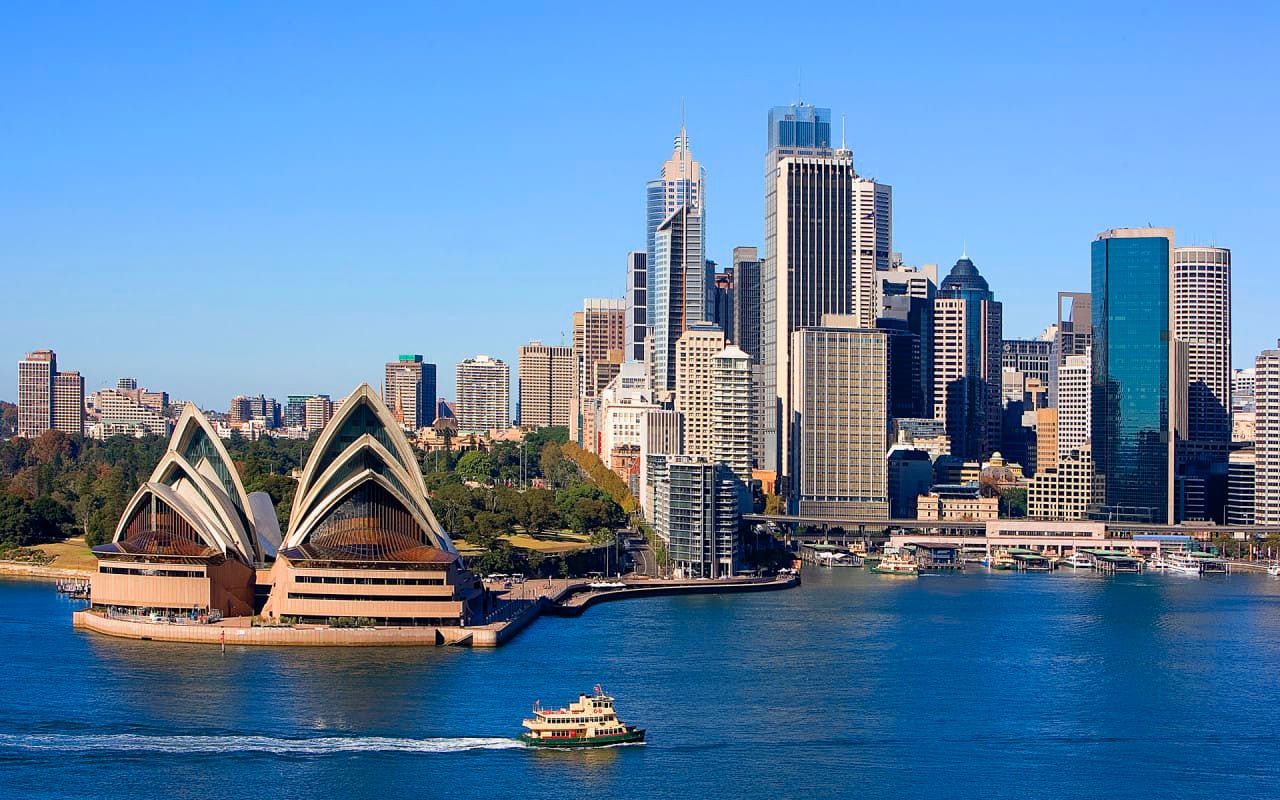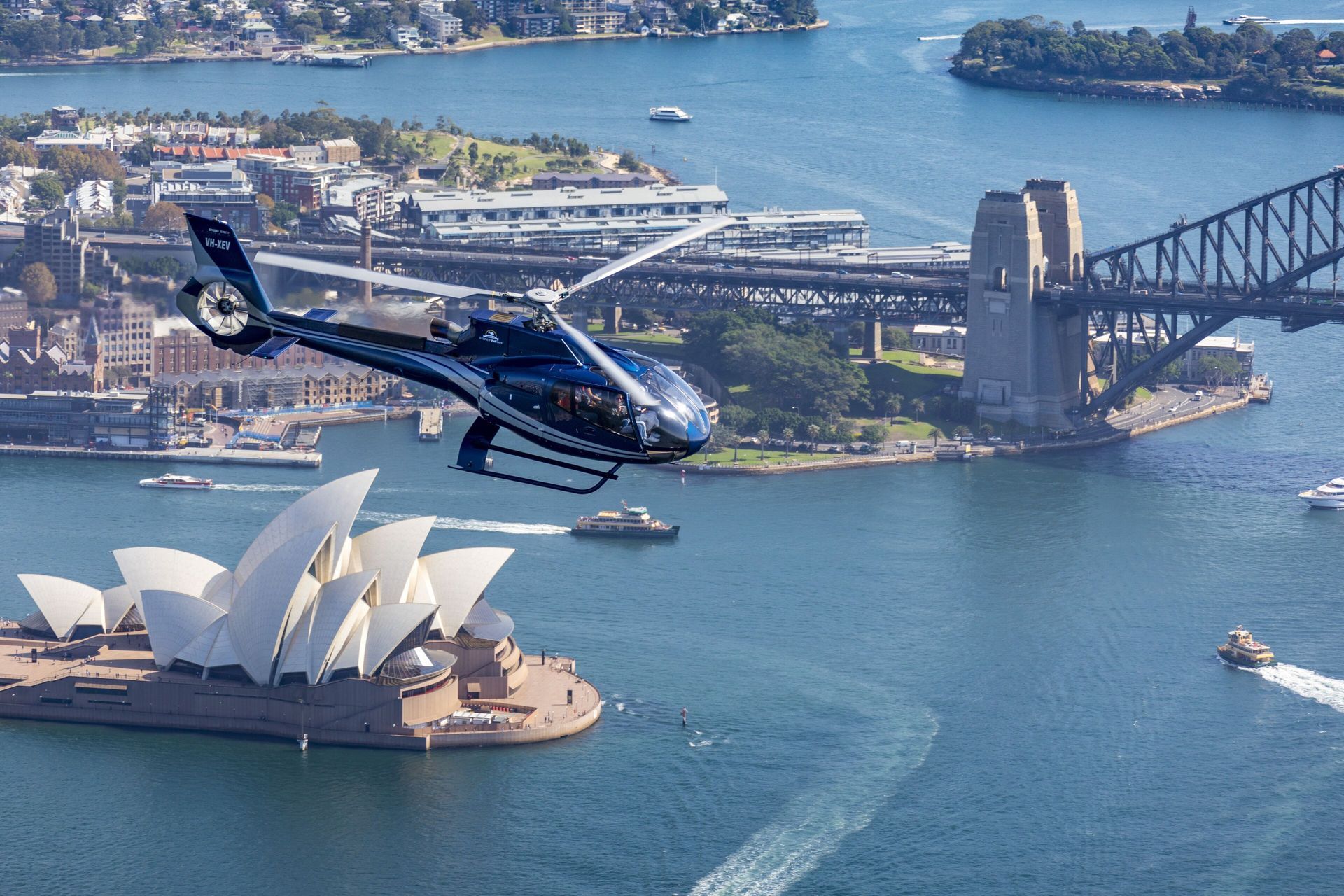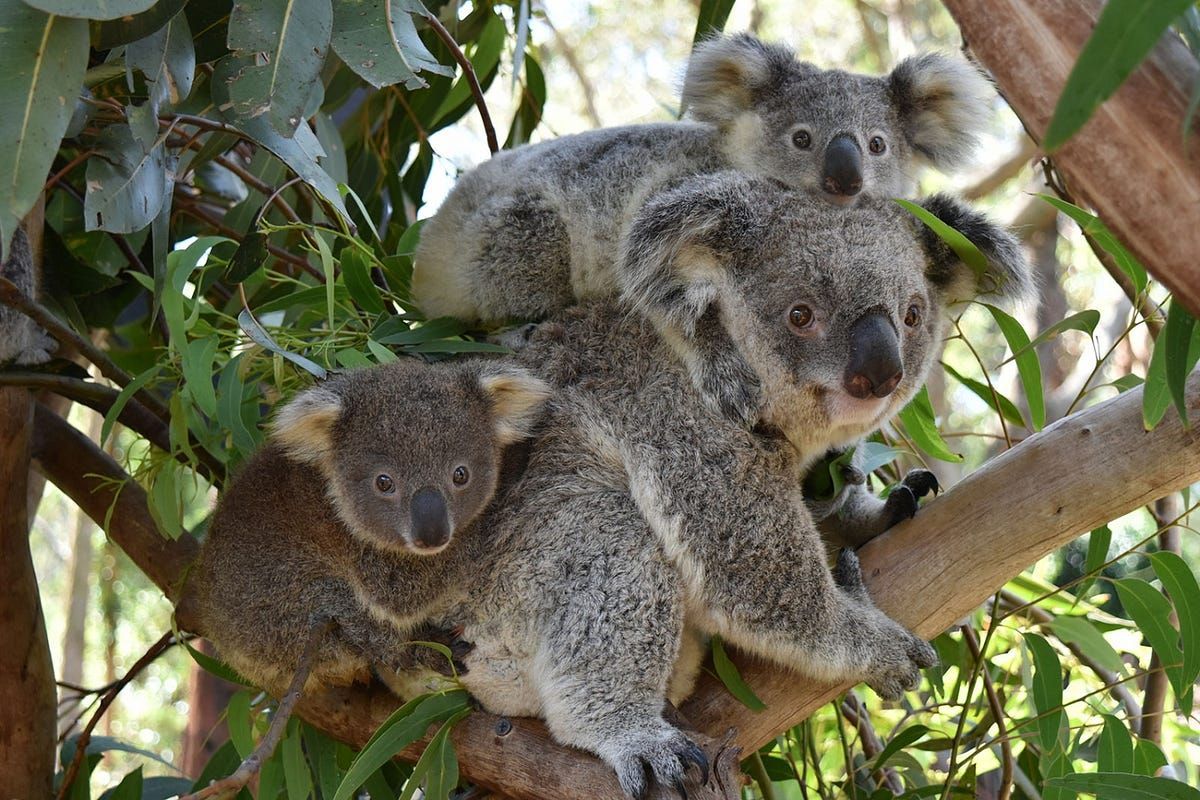To share
Introduction to Australia's Coral Reefs
G'day, mate! Ready to dive into the magical world of Australia's coral reefs? These underwater marvels are like nothing else on Earth, and we're lucky to have some of the most stunning examples right here in our backyard. So, grab your snorkel, and let's explore!
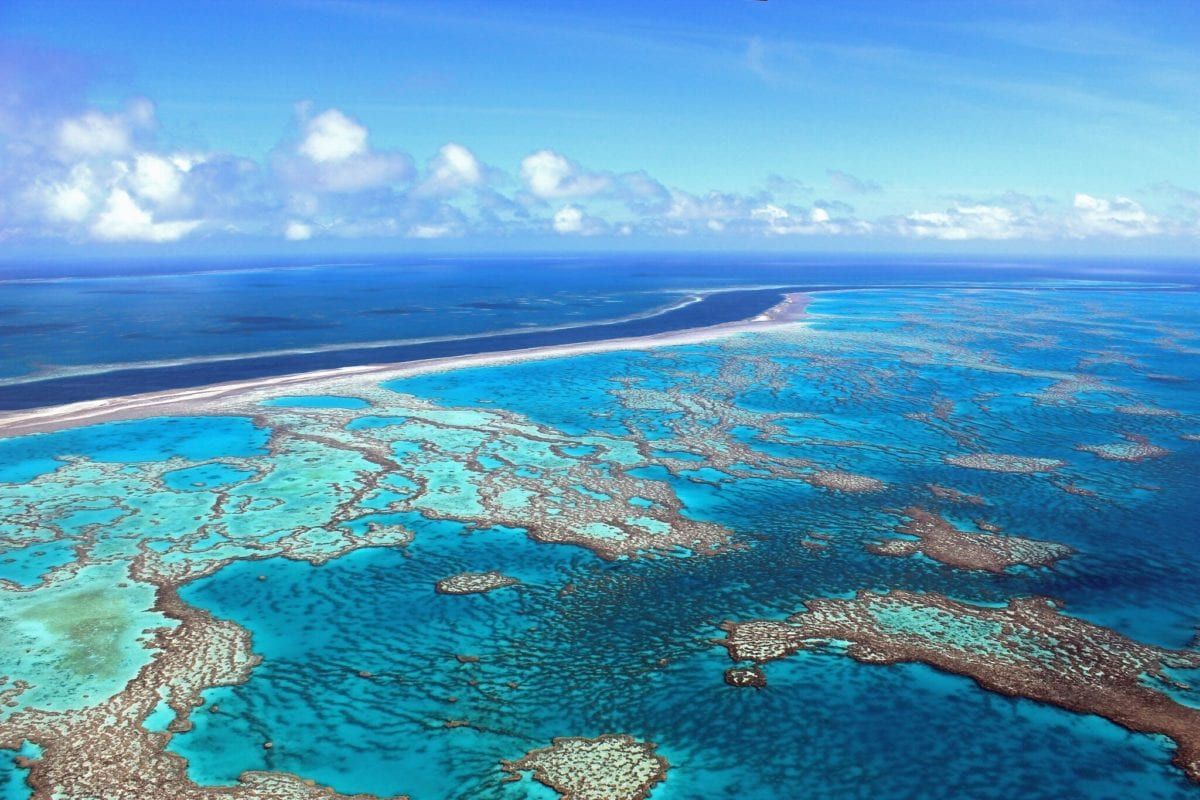
Geographic distribution of coral reefs in Australia
Australia is blessed with coral reefs all around its coastline. The star of the show is, of course, the Great Barrier Reef off Queensland's coast. But did you know we've got other beauties too? There's the Ningaloo Reef in Western Australia, which is like the Great Barrier Reef's quieter cousin. And don't forget the coral sea reefs in the southeast – they might be lesser-known, but they're just as lovely!
Importance of coral reefs to Australia's ecosystem
Our coral reefs aren't just pretty to look at – they're super important for our marine ecosystem. Think of them as underwater cities, bustling with life. Fish, crabs, octopuses – they all call these reefs home. Plus, these reefs are like natural breakwaters, protecting our beaches from big waves and storms. It's amazing how something so beautiful can also be so useful!
Brief history of coral reef formation
Now, here's a fun fact: our reefs are older than the dinosaurs! The Great Barrier Reef started forming about 20 million years ago. Can you imagine? These reefs are built by tiny creatures called coral polyps. They're like underwater architects, constantly building and rebuilding their homes. It's slow work, but hey, they've had millions of years to perfect it!
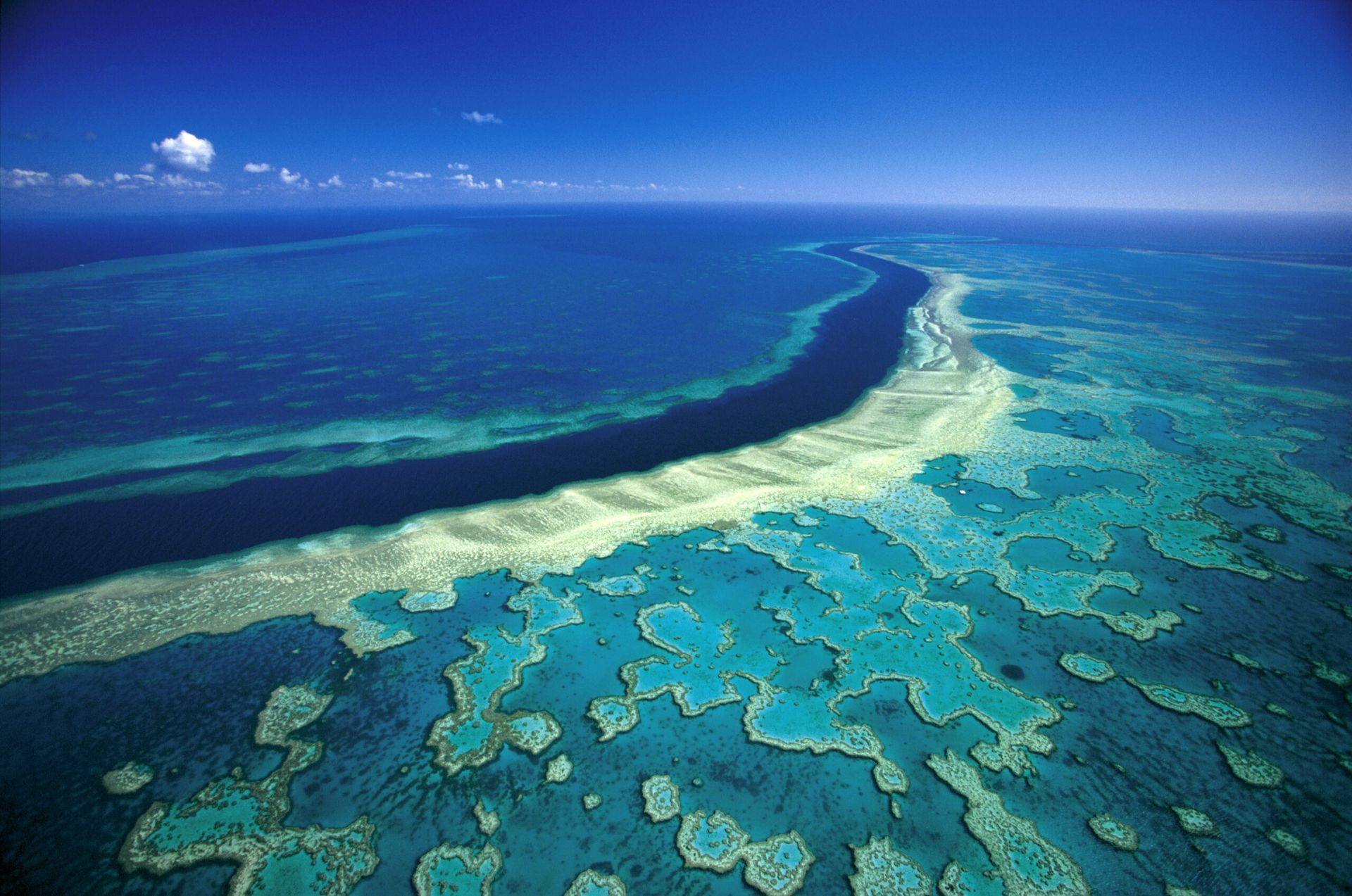
The Great Barrier Reef: A Natural Marvel
Size and scope of the Great Barrier Reef
Alright, let's talk about the big kahuna – the Great Barrier Reef. This thing is massive! It stretches over 2,300 kilometers along our northeast coast. That's about the same distance as driving from Sydney to Cairns! It covers an area of about 344,400 square kilometers. To put that in perspective, it's roughly the size of Japan or Italy. It's so big you can see it from space!
Unique features and biodiversity
The Great Barrier Reef is like a massive underwater zoo. It's home to over 1,500 species of fish. That's more fish species than you'd find in all of Europe! There are 400 types of hard coral, which are the building blocks of the reef. And get this – one-third of the world's soft corals live here too.
But it's not just fish and coral. The reef is also home to 134 species of sharks and rays. Six out of seven of the world's endangered sea turtle species swim these waters. And let's not forget about the 30+ species of whales and dolphins that visit. It's like nature decided to put all its best work in one place!
UNESCO World Heritage status and significance
In 1981, the smart folks at UNESCO looked at the Great Barrier Reef and said, "Yep, this is special." They put it on their World Heritage List, which is like getting a gold star from the whole world. This status recognizes how incredibly beautiful and important the reef is. It's not just a pretty face – the reef tells us a lot about Earth's history. It's like a giant, living history book!
"The Great Barrier Reef is a testament to the wonders of nature, a living masterpiece that we're lucky to have in our care."
So there you have it, mates – a friendly tour of Australia's underwater wonder. The Great Barrier Reef isn't just a national treasure; it's a global one. Next time you're up for an adventure, why not dive in and see it for yourself? Trust me, it's an experience you'll never forget!
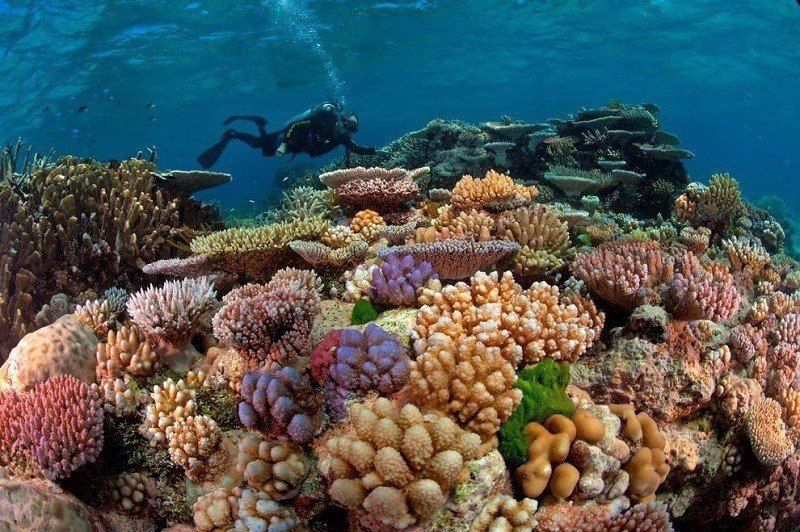
Coral Reef Ecosystem and Inhabitants
Types of coral found in Australian reefs
The Great Barrier Reef is home to an impressive variety of coral species, each contributing to the reef's unique ecosystem. Hard corals, such as staghorn coral, form the reef's structural foundation. These branching corals create intricate habitats for small fish and invertebrates. Brain coral, named for its resemblance to the human brain, is another common hard coral species found in Australian reefs. Its rounded shape and intricate patterns provide shelter for many marine organisms.
Soft corals, like leather corals and sea fans, add to the reef's diversity. These flexible corals sway with the ocean currents, creating a mesmerizing underwater landscape. Plate corals form large, flat structures that provide excellent hiding spots for reef fish and crustaceans.
Each coral type plays a crucial role in maintaining the reef's biodiversity. The various shapes and sizes of corals create a complex three-dimensional structure that supports a wide range of marine life.
Marine life diversity in coral reef environments
The Great Barrier Reef is renowned for its incredible biodiversity. From microscopic organisms to large marine mammals, the reef supports an astonishing array of life forms.
Colorful parrotfish are a common sight on the reef. These vibrant fish play a crucial role in maintaining reef health by consuming algae that might otherwise overgrow the coral. Their unique beak-like mouths help them scrape algae off the coral surface.
Majestic manta rays glide through the waters of the Great Barrier Reef. These gentle giants can reach wingspans of up to 7 meters and are often seen feeding on plankton near the surface.
The endangered dugong, also known as the sea cow, grazes on seagrass beds in the shallow waters of the reef. These marine mammals are closely related to elephants and play an important role in maintaining seagrass ecosystems.
The reef is also home to countless species of smaller, but equally fascinating creatures. Nudibranchs, tiny sea slugs known for their vivid colors and intricate patterns, can be found throughout the reef. These small organisms often play important roles in reef ecosystems as predators or prey.
Symbiotic relationships within the reef ecosystem
Symbiotic relationships form the foundation of coral reef ecosystems. The most fundamental of these is the relationship between coral polyps and zooxanthellae algae.
Coral polyps, the tiny animals that form coral colonies, have a mutually beneficial relationship with microscopic algae called zooxanthellae. The algae live within the coral's tissues and produce food through photosynthesis. In return, the coral provides the algae with protection and access to sunlight.
This symbiotic relationship is crucial for coral survival and growth. The algae supply up to 90% of the coral's energy needs, allowing corals to thrive in nutrient-poor tropical waters. In addition, the algae give corals their vibrant colors, contributing to the reef's stunning visual appeal.
Other symbiotic relationships exist throughout the reef ecosystem. Cleaner wrasses, for example, set up "cleaning stations" where larger fish come to have parasites and dead skin removed. This relationship benefits both parties - the wrasse gets a meal, while the larger fish receives a cleaning service.
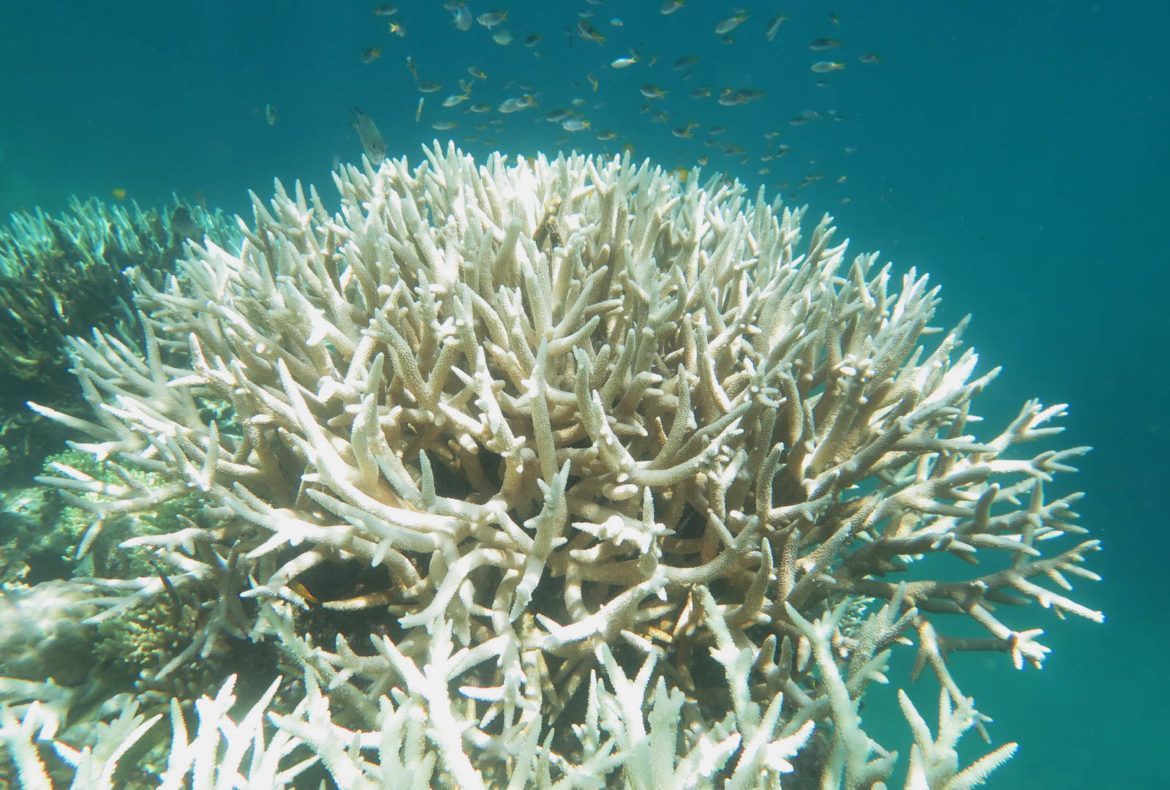
Environmental Challenges Facing Australian Coral Reefs
Climate change and coral bleaching
Climate change poses one of the most significant threats to the Great Barrier Reef. As global temperatures rise, so do sea temperatures. When water temperatures exceed corals' tolerance levels, they expel their symbiotic algae in a process known as coral bleaching.
During bleaching events, corals lose their vibrant colors and turn white. Without their algal partners, corals lose their primary source of nutrition and become more susceptible to disease and death. If bleaching persists for an extended period, entire coral colonies can die.
The Great Barrier Reef has experienced several mass bleaching events in recent years, with particularly severe episodes in 2016, 2017, and 2020. These events have affected large portions of the reef, causing significant coral mortality in some areas.
Ocean acidification and its effects
Ocean acidification is another consequence of climate change that threatens coral reefs. As the ocean absorbs more carbon dioxide from the atmosphere, it becomes more acidic. This change in ocean chemistry makes it harder for corals and other calcifying organisms to build their calcium carbonate skeletons.
For corals, ocean acidification can slow growth rates and weaken existing coral structures. This makes corals more susceptible to damage from storms and other physical disturbances. Additionally, acidification can affect the ability of coral larvae to settle and form new colonies, potentially impacting reef recovery and growth.
Other reef inhabitants, such as mollusks and some plankton species, are also affected by ocean acidification. These organisms play crucial roles in the reef ecosystem, and their decline could have far-reaching consequences for the entire reef community.
Human activities impacting reef health
Direct human activities also pose significant threats to the Great Barrier Reef's health. Overfishing is a major concern, as it can disrupt the delicate balance of reef ecosystems. When key species are removed from the reef, it can lead to shifts in the entire food web. For example, overfishing of herbivorous fish can result in algal overgrowth, which can smother corals and prevent new coral growth.
Pollution from coastal development and agriculture is another significant issue. Runoff from land can introduce excess nutrients, sediments, and pollutants into reef waters. This can lead to poor water quality, which can stress corals and other reef organisms. Excess nutrients can promote algal growth, while sediments can smother corals and reduce the amount of light reaching them.
Coastal development also directly impacts reef ecosystems through habitat destruction. The construction of ports, marinas, and other coastal infrastructure can physically damage reefs and alter water flow patterns.
"The Great Barrier Reef is not just a wonder of the natural world, but a complex and delicate ecosystem facing unprecedented challenges. Its preservation requires global action on climate change and local efforts to reduce direct human impacts."
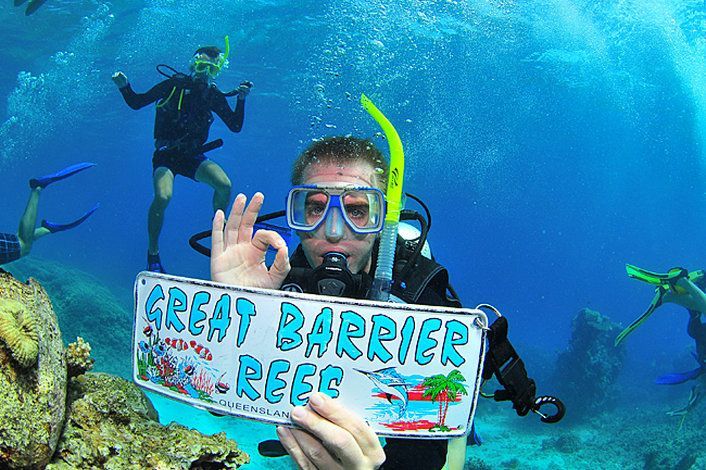
Conservation Efforts and Reef Protection
Government initiatives and policies
The Australian government has taken significant steps to safeguard the Great Barrier Reef and other coral ecosystems. A key initiative is the Reef 2050 Long-Term Sustainability Plan, which outlines a comprehensive strategy for improving the reef's health over the next 30 years. This plan addresses various threats to the reef, including climate change, poor water quality, and coastal development.
The plan includes measures such as:
- Reducing greenhouse gas emissions
- Improving water quality by reducing agricultural runoff
- Strengthening regulations on coastal development
- Enhancing marine park zoning to protect critical areas
Additionally, the government has allocated substantial funding for reef protection, including a $1 billion commitment over nine years announced in 2022.
Scientific research and monitoring programs
Several scientific institutions and organizations play a crucial role in researching and monitoring the health of Australian coral reefs. The Australian Institute of Marine Science (AIMS) is at the forefront of these efforts, conducting regular surveys of reef health and studying the impacts of various stressors on coral ecosystems.
AIMS employs a range of techniques, including:
- Long-term monitoring programs that track changes in coral cover and biodiversity
- Advanced underwater imaging technologies to map reef structures
- Genetic studies to understand coral resilience and adaptation
Other organizations, such as the Great Barrier Reef Marine Park Authority and various universities, also contribute significantly to reef research. Their work provides valuable data that informs conservation strategies and policy decisions.
Community and tourist involvement in reef preservation
Local communities and tourists play a vital role in reef conservation efforts. Many tour operators participate in eco-certification programs, such as the ECO Certification program by Ecotourism Australia. These programs ensure that tourism activities are conducted sustainably and that visitors are educated about reef conservation.
Community-based initiatives also contribute significantly to reef protection:
- Regular beach clean-ups organized by local groups
- Citizen science projects that involve volunteers in data collection
- Educational programs in schools to raise awareness about reef conservation
These efforts not only help in direct conservation activities but also foster a sense of stewardship among local communities and visitors.
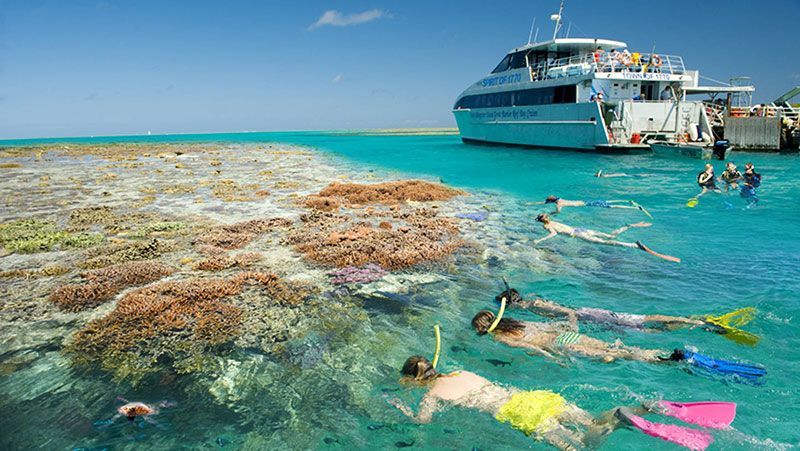
Economic Importance of Coral Reefs to Australia
Tourism industry and reef-related activities
The Great Barrier Reef is a major contributor to Australia's economy through tourism. Reef-related tourism, including activities such as diving, snorkeling, and boat tours, generates billions of dollars annually and supports thousands of jobs.
Key economic impacts include:
- Direct contribution of approximately $6.4 billion annually to the Australian economy
- Support for over 64,000 full-time jobs
- Attraction of millions of domestic and international visitors each year
The reef's economic value extends beyond direct tourism revenue, as it also contributes to Australia's international reputation and attracts investment in related industries.
Fishing and aquaculture in reef areas
Coral reefs support important commercial and recreational fisheries in Australia. However, sustainable management is crucial to ensure these activities don't negatively impact reef health.
The fishing industry in reef areas:
- Contributes significantly to local economies in coastal communities
- Provides a source of food and livelihood for many Australians
- Requires careful management to prevent overfishing and habitat damage
Aquaculture in reef areas is also growing, with potential for sustainable seafood production if properly managed.
Pharmaceutical potential of reef organisms
Coral reef organisms represent a promising frontier in pharmaceutical research. Scientists have discovered compounds from reef species that show potential in treating various diseases, including cancer and Alzheimer's.
Examples of promising discoveries include:
- Compounds from sea sponges with anti-cancer properties
- Painkillers derived from cone snail venom
- Anti-inflammatory agents from soft corals
This potential for new medicines adds another dimension to the economic value of coral reefs and underscores the importance of their conservation for future medical breakthroughs.
"The Great Barrier Reef is not just a natural wonder, but a vital economic asset and a potential source of life-saving medicines. Its protection is crucial for both environmental and economic reasons."
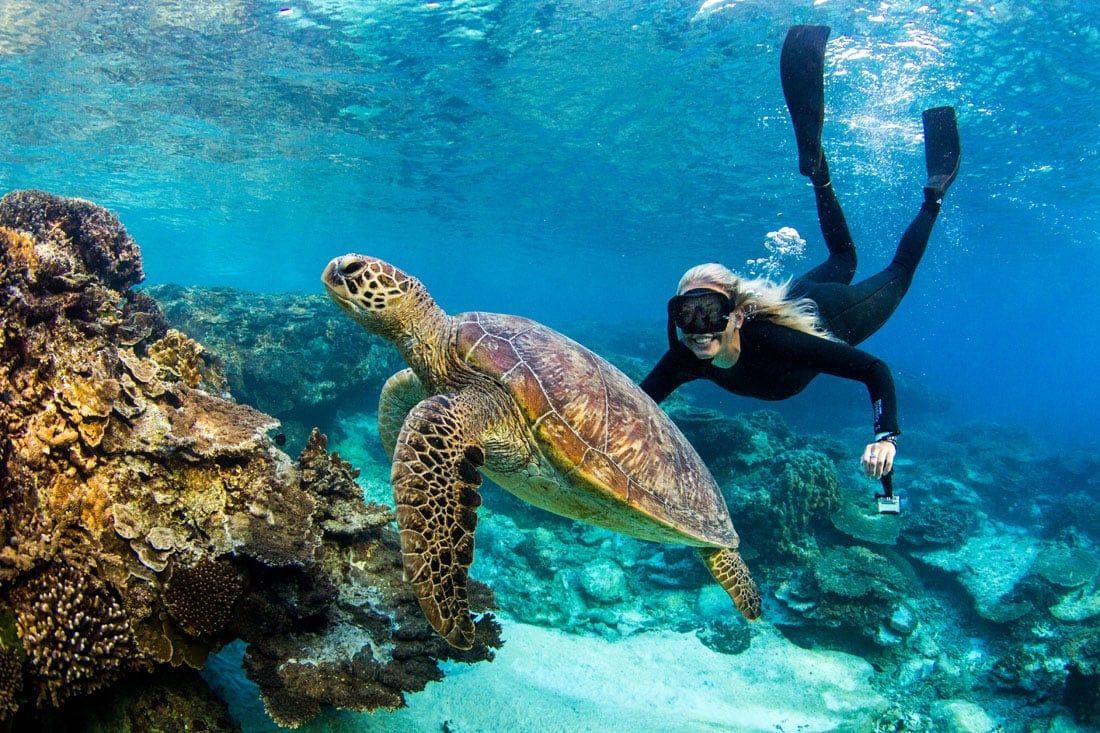
Future Outlook for Australian Coral Reefs
Predictions for reef health in coming decade
The future of Australian coral reefs, particularly the Great Barrier Reef, is a topic of significant concern and research. Climate change remains the most pressing threat to these ecosystems. Rising sea temperatures and ocean acidification pose substantial challenges to coral survival.
According to the latest scientific projections, if global temperatures rise by 1.5°C above pre-industrial levels, we could lose 70-90% of coral reefs worldwide. At 2°C of warming, the loss could be over 99%. These statistics underscore the urgency of climate action.
However, it's not all doom and gloom. Many scientists believe that with immediate and substantial reductions in greenhouse gas emissions, coupled with local management of other stressors like water pollution and overfishing, we can help coral reefs adapt and survive.
The Australian Institute of Marine Science (AIMS) has developed models that suggest if we can limit global warming to 1.5°C, the Great Barrier Reef could recover to its pre-2016 condition by 2050. This recovery, however, depends on both global and local actions.
Innovative technologies for reef restoration
As the challenges facing coral reefs intensify, scientists are turning to innovative technologies to aid in restoration efforts. These approaches aim to accelerate natural recovery processes and enhance reef resilience.
One promising technique is coral farming. This involves growing corals in nurseries, either on land or in the ocean, and then transplanting them to degraded reef areas. The process can be likened to replanting a forest after a wildfire. In the Great Barrier Reef, organizations like the Reef Restoration Foundation are pioneering such efforts.
Another cutting-edge approach is the development of more heat-resistant coral species. Scientists at AIMS are working on a process called "assisted evolution," where they expose corals to higher temperatures in controlled settings, allowing them to adapt over generations. The goal is to develop coral strains that can better withstand warming oceans.
Researchers are also exploring the use of probiotics for corals. Just as humans take probiotics to boost gut health, scientists are investigating whether beneficial bacteria can help corals resist bleaching and disease.
International cooperation in reef conservation
Protecting coral reefs is a global challenge that requires international cooperation. Australia, as the custodian of the Great Barrier Reef, plays a crucial role in these collaborative efforts.
One key initiative is the International Coral Reef Initiative (ICRI), a global partnership between nations and organizations that strives to preserve coral reefs and related ecosystems. Australia is an active member of ICRI, sharing knowledge and best practices with other coral reef nations.
Australia also participates in the Coral Triangle Initiative, a multilateral partnership of six countries working to sustain extraordinary marine resources. While Australia is not part of the Coral Triangle proper, it provides support and expertise to this crucial conservation effort.
Furthermore, Australia collaborates with UNESCO and other nations to fulfill its obligations under the World Heritage Convention, as the Great Barrier Reef is a World Heritage site. This involves regular reporting on the reef's status and implementation of conservation measures.
Summary
Australian coral reefs, with the Great Barrier Reef at the forefront, are natural wonders of immense ecological, economic, and cultural importance. They face significant challenges from climate change and human activities, but there's still hope for their future.
Ongoing conservation efforts, from innovative restoration technologies to international collaborations, are making a difference. However, the most crucial factor in the long-term survival of these reefs is global action on climate change.
Protecting these underwater marvels requires a multi-faceted approach involving governments, scientists, local communities, and global citizens. Every action, from reducing carbon footprints to supporting reef-friendly businesses, contributes to the preservation of these irreplaceable ecosystems.
As we look to the future, the fate of Australian coral reefs hangs in the balance. With continued commitment, innovation, and cooperation, we can hope to preserve these natural wonders for generations to come.
Frequently Asked Questions (FAQs)
1. How old is the Great Barrier Reef?
The Great Barrier Reef as we know it today began forming around 20,000 years ago. However, the earliest evidence of coral growth in the region dates back about 600,000 years. The current reef structure is relatively young, having developed after the last ice age.
2. Can the Great Barrier Reef recover from bleaching events?
Yes, coral reefs can recover from bleaching events, but this process takes time. The speed and extent of recovery depend on various factors, including the severity of the bleaching, the overall health of the reef, and the time between bleaching events. With favorable conditions and enough time, reefs can bounce back. However, as bleaching events become more frequent due to climate change, the reef's ability to fully recover between events is compromised.
3. How can tourists visit the reef responsibly?
Responsible reef tourism involves several practices:
- Choose eco-certified tour operators
- Use reef-safe sunscreen
- Don't touch or step on coral
- Practice responsible snorkeling and diving techniques
- Dispose of waste properly
- Support local conservation efforts
4. What are some simple ways individuals can help protect coral reefs?
Individuals can contribute to coral reef protection in various ways:
- Reduce carbon footprint by conserving energy and using sustainable transportation
- Choose sustainable seafood options
- Reduce plastic use and dispose of waste properly
- Support reef-friendly businesses and conservation organizations
- Educate others about the importance of coral reefs
5. Are there any coral reefs in Australia other than the Great Barrier Reef?
Yes, Australia is home to several other significant coral reef systems besides the Great Barrier Reef. These include:
- Ningaloo Reef in Western Australia
- The coral reefs of the Coral Sea Marine Park
- Lord Howe Island Marine Park in New South Wales
- The Rowley Shoals off the coast of Western Australia
These reefs, while less well-known than the Great Barrier Reef, also play crucial roles in marine biodiversity and require ongoing protection and conservation efforts.

